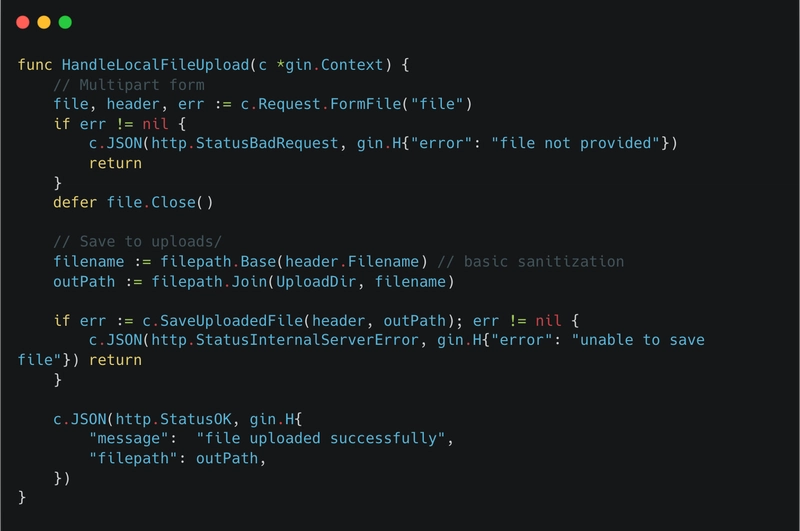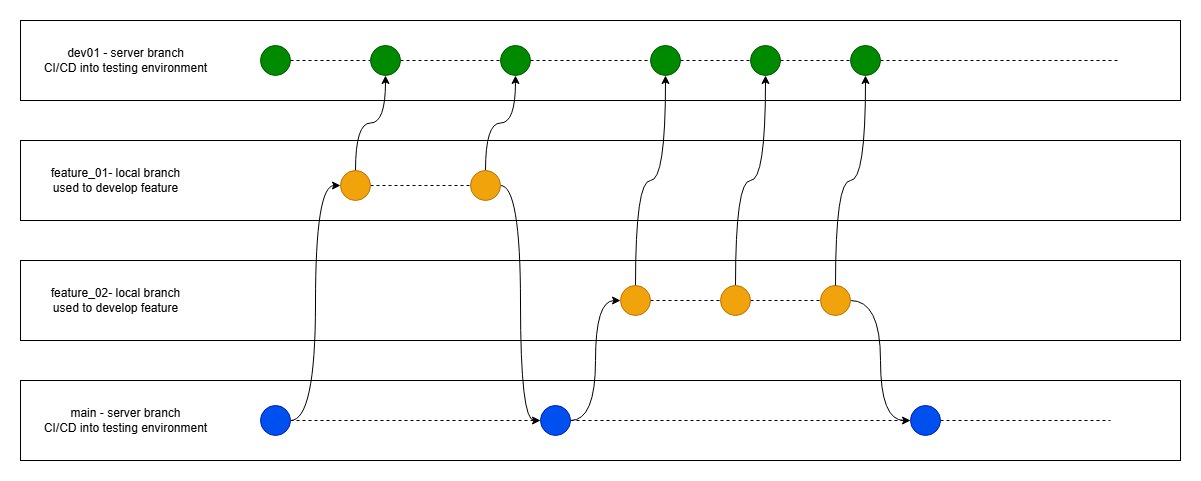Understanding Polymorphism in Python: A Comprehensive Guide
Introduction Polymorphism is one of the most powerful and flexible features in Object-Oriented Programming (OOP). While inheritance might be the most unique aspect of OOP, polymorphism is arguably its most powerful tool. But what exactly is polymorphism, and how does it work in Python? In this article, we'll break down the concept, explain how it works with examples, and show you how to use it effectively in your own code. What is Polymorphism? The term "polymorphism" comes from the Greek roots "poly," meaning "many," and "morph," meaning "form." In the context of programming, polymorphism refers to the ability of a variable, function, or object to take on multiple forms. Essentially, it allows different classes to be treated as if they are instances of the same class through a common interface. Example of Polymorphism Consider a scenario where you have different creatures in a game, each with its own way of moving. Using polymorphism, you can create a unified interface that allows all these creatures to be handled in the same way, even though they move differently. class Creature: def move(self): print("The creature moves.") class Dragon(Creature): def move(self): print("The dragon flies.") class Kraken(Creature): def move(self): print("The kraken swims.") # Using polymorphism for creature in [Creature(), Dragon(), Kraken()]: creature.move() # Output: # The creature moves. # The dragon flies. # The kraken swims. In this example: The Dragon and Kraken classes override the move() method of the Creature class. The for loop treats each object as a Creature, but the appropriate move() method is called depending on the actual class of the object. Method Overriding One of the most common forms of polymorphism in OOP is method overriding. When a child class overrides a method of its parent class, it provides a new implementation for the method. This allows the child class to define its specific behavior while still adhering to the interface defined by the parent class. Example: Overriding Methods class Shape: def draw(self): raise NotImplementedError("Subclasses must implement this method.") class Circle(Shape): def draw(self): return "Drawing a circle." class Rectangle(Shape): def draw(self): return "Drawing a rectangle." shapes = [Circle(), Rectangle()] for shape in shapes: print(shape.draw()) # Output: # Drawing a circle. # Drawing a rectangle. In this example: The Shape class defines a draw() method that raises a NotImplementedError. This ensures that any subclass must implement its own version of the draw() method. The Circle and Rectangle classes provide their own implementations of the draw() method, demonstrating polymorphism. Operator Overloading Polymorphism in Python is not limited to classes and methods. Python also allows you to define how operators behave with user-defined classes, a feature known as operator overloading. Example: Overloading the + Operator class Point: def __init__(self, x, y): self.x = x self.y = y def __add__(self, other): return Point(self.x + other.x, self.y + other.y) def __str__(self): return f"({self.x}, {self.y})" p1 = Point(4, 5) p2 = Point(2, 3) p3 = p1 + p2 print(p3) # Output: (6, 8) In this example: The Point class defines an add() method, which allows instances of Point to be added using the + operator. The str() method is overridden to provide a human-readable string representation of the Point object. Polymorphism in Built-In Functions Polymorphism also plays a crucial role in Python’s built-in functions like len(), str(), and print(), which can work with different types of data. Example: The len() Function print(len("hello")) # Output: 5 print(len([1, 2, 3, 4])) # Output: 4 print(len({"key": "value", "another_key": "another_value"})) # Output: 2 In this example, the len() function behaves polymorphically, handling strings, lists, and dictionaries differently based on their underlying data types. When to Use Polymorphism Simplifying Code Polymorphism is particularly useful when you need to simplify your code by treating different objects in a consistent way. This is especially beneficial in scenarios where you have a variety of objects that share similar behavior but implement it in different ways. Enhancing Flexibility Polymorphism makes your code more flexible and extensible. If you add new classes that conform to the same interface, you can integrate them into your existing codebase without modifying the code that uses the interface. Avoiding Conditional Statements Polymorphism allows you to avoid lengthy conditional statements by letting the objects decide which method to call. This leads to cleaner and more maintainable code. Conclusion Polymorphism is a

Introduction
Polymorphism is one of the most powerful and flexible features in Object-Oriented Programming (OOP). While inheritance might be the most unique aspect of OOP, polymorphism is arguably its most powerful tool. But what exactly is polymorphism, and how does it work in Python? In this article, we'll break down the concept, explain how it works with examples, and show you how to use it effectively in your own code.
What is Polymorphism?
The term "polymorphism" comes from the Greek roots "poly," meaning "many," and "morph," meaning "form." In the context of programming, polymorphism refers to the ability of a variable, function, or object to take on multiple forms. Essentially, it allows different classes to be treated as if they are instances of the same class through a common interface.
Example of Polymorphism
Consider a scenario where you have different creatures in a game, each with its own way of moving. Using polymorphism, you can create a unified interface that allows all these creatures to be handled in the same way, even though they move differently.
class Creature:
def move(self):
print("The creature moves.")
class Dragon(Creature):
def move(self):
print("The dragon flies.")
class Kraken(Creature):
def move(self):
print("The kraken swims.")
# Using polymorphism
for creature in [Creature(), Dragon(), Kraken()]:
creature.move()
# Output:
# The creature moves.
# The dragon flies.
# The kraken swims.
In this example:
The Dragon and Kraken classes override the move() method of the Creature class.
The for loop treats each object as a Creature, but the appropriate move() method is called depending on the actual class of the object.
Method Overriding
One of the most common forms of polymorphism in OOP is method overriding. When a child class overrides a method of its parent class, it provides a new implementation for the method. This allows the child class to define its specific behavior while still adhering to the interface defined by the parent class.
Example: Overriding Methods
class Shape:
def draw(self):
raise NotImplementedError("Subclasses must implement this method.")
class Circle(Shape):
def draw(self):
return "Drawing a circle."
class Rectangle(Shape):
def draw(self):
return "Drawing a rectangle."
shapes = [Circle(), Rectangle()]
for shape in shapes:
print(shape.draw())
# Output:
# Drawing a circle.
# Drawing a rectangle.
In this example:
- The Shape class defines a draw() method that raises a NotImplementedError. This ensures that any subclass must implement its own version of the draw() method.
- The Circle and Rectangle classes provide their own implementations of the draw() method, demonstrating polymorphism.
Operator Overloading
Polymorphism in Python is not limited to classes and methods. Python also allows you to define how operators behave with user-defined classes, a feature known as operator overloading.
Example: Overloading the + Operator
class Point:
def __init__(self, x, y):
self.x = x
self.y = y
def __add__(self, other):
return Point(self.x + other.x, self.y + other.y)
def __str__(self):
return f"({self.x}, {self.y})"
p1 = Point(4, 5)
p2 = Point(2, 3)
p3 = p1 + p2
print(p3) # Output: (6, 8)
In this example:
- The Point class defines an add() method, which allows instances of Point to be added using the + operator.
- The str() method is overridden to provide a human-readable string representation of the Point object.
Polymorphism in Built-In Functions
Polymorphism also plays a crucial role in Python’s built-in functions like len(), str(), and print(), which can work with different types of data.
Example: The len() Function
print(len("hello")) # Output: 5
print(len([1, 2, 3, 4])) # Output: 4
print(len({"key": "value", "another_key": "another_value"})) # Output: 2
In this example, the len() function behaves polymorphically, handling strings, lists, and dictionaries differently based on their underlying data types.
When to Use Polymorphism
Simplifying Code
Polymorphism is particularly useful when you need to simplify your code by treating different objects in a consistent way. This is especially beneficial in scenarios where you have a variety of objects that share similar behavior but implement it in different ways.
Enhancing Flexibility
Polymorphism makes your code more flexible and extensible. If you add new classes that conform to the same interface, you can integrate them into your existing codebase without modifying the code that uses the interface.
Avoiding Conditional Statements
Polymorphism allows you to avoid lengthy conditional statements by letting the objects decide which method to call. This leads to cleaner and more maintainable code.
Conclusion
Polymorphism is a powerful feature in Object-Oriented Programming that allows you to write flexible, reusable, and maintainable code. Whether you're using method overriding, operator overloading, or leveraging Python’s built-in functions, polymorphism provides a consistent way to handle different data types and behaviors. By understanding and applying polymorphism in your Python code, you can create systems that are not only more efficient but also easier to extend and maintain.





































































































































































![[The AI Show Episode 145]: OpenAI Releases o3 and o4-mini, AI Is Causing “Quiet Layoffs,” Executive Order on Youth AI Education & GPT-4o’s Controversial Update](https://www.marketingaiinstitute.com/hubfs/ep%20145%20cover.png)




























































































































![[DEALS] Microsoft 365: 1-Year Subscription (Family/Up to 6 Users) (23% off) & Other Deals Up To 98% Off – Offers End Soon!](https://www.javacodegeeks.com/wp-content/uploads/2012/12/jcg-logo.jpg)




![From Art School Drop-out to Microsoft Engineer with Shashi Lo [Podcast #170]](https://cdn.hashnode.com/res/hashnode/image/upload/v1746203291209/439bf16b-c820-4fe8-b69e-94d80533b2df.png?#)









































































































(1).jpg?#)































_Inge_Johnsson-Alamy.jpg?width=1280&auto=webp&quality=80&disable=upscale#)



















































































































![New Apple iPad mini 7 On Sale for $399! [Lowest Price Ever]](https://www.iclarified.com/images/news/96096/96096/96096-640.jpg)
![Apple to Split iPhone Launches Across Fall and Spring in Major Shakeup [Report]](https://www.iclarified.com/images/news/97211/97211/97211-640.jpg)
![Apple to Move Camera to Top Left, Hide Face ID Under Display in iPhone 18 Pro Redesign [Report]](https://www.iclarified.com/images/news/97212/97212/97212-640.jpg)
![Apple Developing Battery Case for iPhone 17 Air Amid Battery Life Concerns [Report]](https://www.iclarified.com/images/news/97208/97208/97208-640.jpg)
































































































